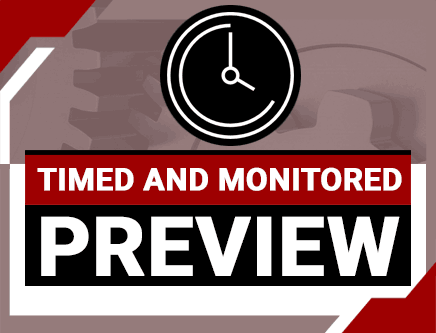Construction of Residential Buildings in Coastal Areas (Ohio Timed & Monitored)
Credit: 4 PDH
Subject Matter Expert: Jeffrey Havelin, P.E., B.S.C.E.
In Construction of Residential Buildings in Coastal Areas , you'll learn ...
- Foundation design and installation methods
- Special structural connection requirements for coastal construction
- Inspection guidelines for coastal area construction
- How to design the building envelope to prevent water intrusion
Overview

To meet the Ohio Board's intent that online courses be "paced" by the provider, a timer will be used to record your study time. You will be unable to access the quiz until the required study time of 200 minutes has been met.
Credit: 4 PDH
Length: 59 pages
Construction of residential buildings in coastal zones presents challenges to the builder not usually found in more inland locations. For all coastal residential buildings, these challenges may include various connection details require additional inspections; careful surveying is required to place the building within property line setbacks and above the Design Flood Elevation (DFE); special care which is required to ensure that all elements of the building will withstand the large forces associated with high wind speeds and coastal flooding; difficulty of providing durable exterior construction in a moist, sometimes salt-laden, environment; and the requirement to protect and, usually, place utilities above the DFE.
In constructing coastal residential buildings on elevated pile foundations, builders face additional challenges such as difficulty of constructing a driven pile foundation to accepted construction plan tolerances; difficulty of building on an elevated post-and-beam foundation, compared to building on continuous wall foundations; and the additional care that must be taken in constructing a building envelope that will withstand the intrusion of air and moisture under the effects of high wind speeds.
This course discusses the construction aspects of the above challenges, as well as basic aspects of the coastal construction process and is divided into the following sections: Foundation Construction, Structural Framing, Building Envelope, Appurtenant Structures and Utility/Mechanical Equipment.
Fact: The National Flood Insurance Program (NFIP) regulations state that for buildings in V zones, "a registered professional engineer or architect shall develop or review the structural design, specifications and plans for the construction, and shall certify that the design and methods of construction to be used are in accordance with accepted standards of practice" for meeting the provisions of the NFIP regulations regarding buildings in V zones.
Specific Knowledge or Skill Obtained
This course teaches the following specific knowledge and skills:
- General understanding about pile foundations and potential bearing capacities of various USDA soil classifications
- Determine pile capacity using the "Pile driving resistance for Drop Hammer Piledrivers" formula
- Learn about critical inspection areas that require special attention
- An overview of structural framing and discussion of top structural frame issues for builders
- Methods to transfer shear forces and transfer wind uplift tensile forces
- Provide an overview to critical inspection areas of the building envelope and top building envelop issues for builders
- Provides special guidelines for appurtenant structures
- Provides guidelines for utility and mechanical equipment
- American Forest and Paper Association (AF&PA) Wood Frame Construction Manual for One and Two- Family Dwellings (WFCM)
- Southern Building Code Congress International Standard for Hurricane Resistant Residential Construction (SSTD 10)
Certificate of Completion
You will be able to immediately print a certificate of completion after passing a multiple-choice quiz consisting of 25 questions. PDH credits are not awarded until the course is completed and quiz is passed.
| This course is applicable to professional engineers in: | ||
| Alabama (P.E.) | Alaska (P.E.) | Arkansas (P.E.) |
| Delaware (P.E.) | District of Columbia (P.E.) | Florida (P.E. Area of Practice) |
| Georgia (P.E.) | Idaho (P.E.) | Illinois (P.E.) |
| Illinois (S.E.) | Indiana (P.E.) | Iowa (P.E.) |
| Kansas (P.E.) | Kentucky (P.E.) | Louisiana (P.E.) |
| Maine (P.E.) | Maryland (P.E.) | Michigan (P.E.) |
| Minnesota (P.E.) | Mississippi (P.E.) | Missouri (P.E.) |
| Montana (P.E.) | Nebraska (P.E.) | Nevada (P.E.) |
| New Hampshire (P.E.) | New Jersey (P.E.) | New Mexico (P.E.) |
| New York (P.E.) | North Carolina (P.E.) | North Dakota (P.E.) |
| Ohio (P.E. Timed & Monitored) | Oklahoma (P.E.) | Oregon (P.E.) |
| Pennsylvania (P.E.) | South Carolina (P.E.) | South Dakota (P.E.) |
| Tennessee (P.E.) | Texas (P.E.) | Utah (P.E.) |
| Vermont (P.E.) | Virginia (P.E.) | West Virginia (P.E.) |
| Wisconsin (P.E.) | Wyoming (P.E.) | |




